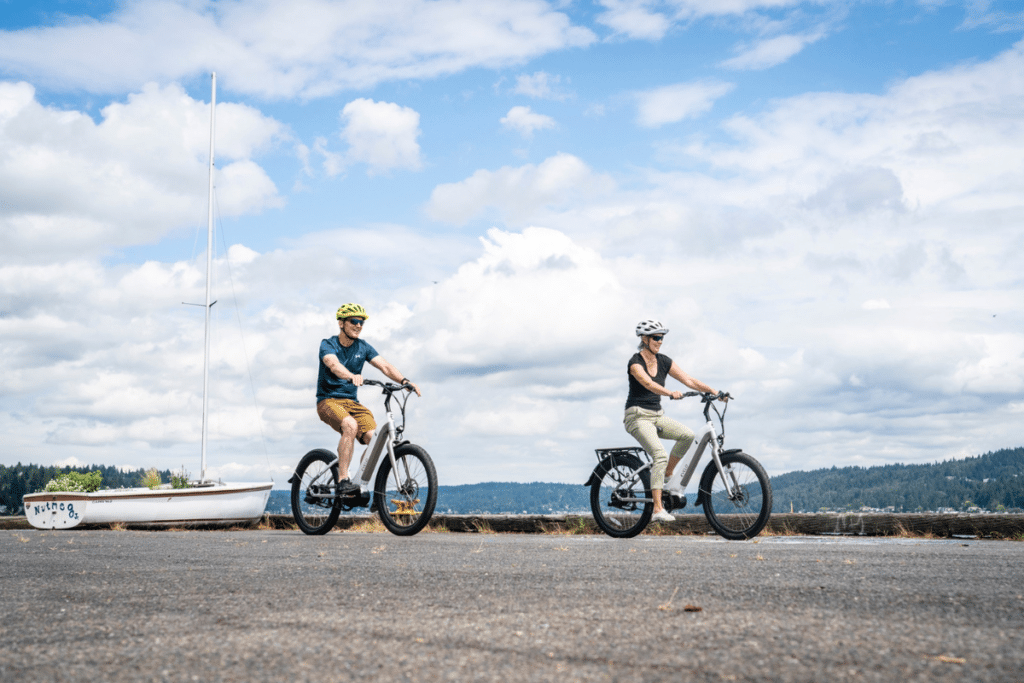Electric bikes, or e-bikes, have become increasingly popular in recent years as a convenient and environmentally friendly mode of transportation. As more people turn to e-bikes for their daily commutes, leisure rides, and exercise, one question that often arises is: how far can an electric bike go without pedaling? In this article, we will explore the factors affecting the range of e-bikes and provide useful tips on maximizing their battery life.

A Brief Overview of Electric Bikes
An electric bike, at its core, combines the traditional components of a bicycle with an electric motor and a battery. This allows riders to either pedal manually, rely entirely on the motorized assistance, or use a combination of both. The level of assistance provided by the motor can vary depending on the specific e-bike model, with some offering multiple power settings.
Factors Affecting E-Bike Range
The range of an electric bike refers to the distance it can travel on a fully charged battery without relying on manual pedaling. There are several factors that affect a bike’s range:
- Battery Capacity: Measured in watt-hours (Wh), the capacity of a bike’s battery plays a significant role in determining its range. The higher the watt-hour rating, the greater the potential distance the e-bike can cover.
- Motor Efficiency: Not all e-bike motors are created equal – some are more efficient than others. An efficient motor can convert a larger portion of a battery’s energy into forward momentum, enabling the bike to cover greater distances.
- Terrain: The terrain you ride on will significantly impact your e-bike’s range. Riding uphill or on rough, uneven surfaces requires more motor power, which in turn drains the battery faster.
- Weather Conditions: Cold temperatures can affect battery performance and reduce an e-bike’s range. Additionally, riding against a strong headwind will require more motor assistance, reducing battery life.
- Rider Weight: The weight of the rider, including any cargo, influences the amount of energy required to propel an electric bike. A heavier load will drain the battery quicker and subsequently limit its range.
- Tire Pressure: Maintaining proper tire pressure is essential for maximizing range. Underinflated tires create additional rolling resistance, putting more strain on the motor and depleting battery life faster.
Find out all you need to know about how do i know if my electric bike is charging
Increasing Your E-Bike’s Range Without Pedaling
While it may be tempting to rely solely on the motor to power your electric bike, doing so can significantly limit its overall range. Fortunately, there are several ways to extend your e-bike’s battery life without resorting to constant pedaling:
- Plan Your Route Wisely – Choose flatter, smoother terrain whenever possible to minimize the amount of energy required to move your e-bike. Avoiding steep inclines and off-road conditions will go a long way in preserving battery life.
- Maintain Proper Tire Pressure – Make sure your tires are always inflated to the recommended pressure levels specified by the manufacturer. This helps maintain optimal rolling resistance and reduces the strain on your e-bike’s motor.
- Adjust Motor Assistance Levels – Many e-bikes come with adjustable power settings that allow you to use more or less motor assistance depending on your needs. If preserving battery life is a priority, try using the lowest power setting that allows for comfortable riding.
- Conserve Energy – Try to accelerate smoothly and anticipate when you’ll need to slow down for intersections, traffic lights, or other obstacles. By avoiding sudden starts and stops, your e-bike’s motor can work more efficiently and save energy.
- Consider Investing in a Larger Battery – If maximizing range without pedaling is crucial, it may be worth investing in an e-bike with a larger battery capacity or upgrading your existing bike’s battery. Just be prepared for potential added weight and cost.
Better Safe Than Sorry: How to Handle a Depleted Battery
In case you find yourself out on a ride with a depleted battery and no opportunity to recharge, it is essential to be prepared. Since electric bikes are typically heavier than traditional bicycles, manual pedaling may prove more challenging than you’re accustomed to. Here are some suggestions to minimize inconvenience:
- Have a Backup Plan – Know the locations of nearby public transportation options, such as buses or train stations, that can accommodate bicycles. Alternatively, consider carrying a lightweight bike lock to secure your e-bike while you arrange for alternative transportation.
- Keep a Spare Battery On Hand – Carrying a fully-charged spare battery can provide a convenient solution for extended trips. Although this will add additional weight to your load, it may be worth the trade-off if your primary goal is extended motorized range.
- Practice Riding Without Assistance – Don’t depend entirely on your e-bike’s motor. To familiarize yourself with the feel of your bike without assistance, try incorporating manual riding into your routine. This way, you’ll be better prepared to handle any situation where pedaling is necessary.
